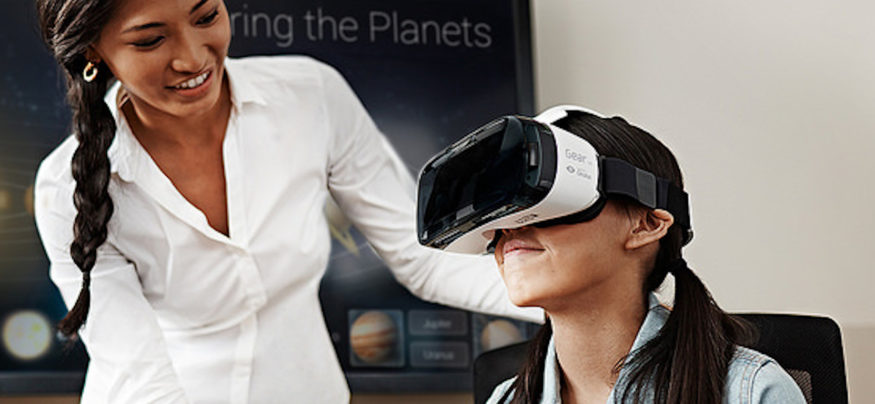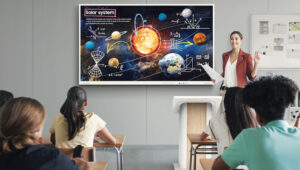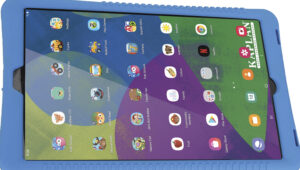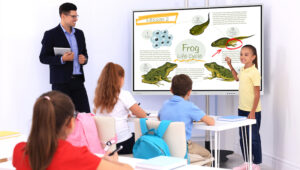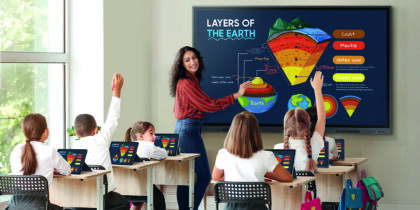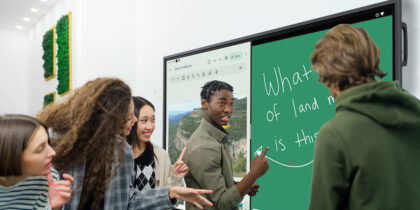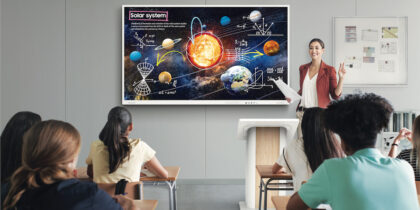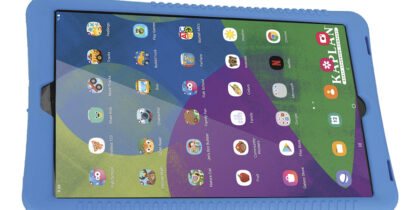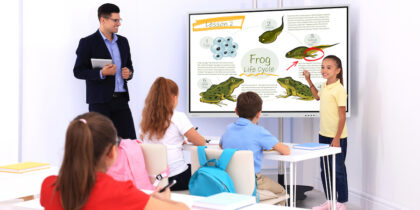It’s time to think more about using virtual reality in education, as educators see in it an opportunity to help bring STEM learning to life for today’s middle- and high-school students.
“Teachers have the most interest in using VR for science,” says Baptiste Greve, founder and CEO at Unimersiv, which currently offers a platform for VR educational experiences for Samsung Gear VR headsets that work with Samsung Galaxy smartphones. In a survey Unimersiv conducted online last August on the state of VR in education, more than half of the 149 respondents said that science was the most important knowledge category where the technology could have a learning impact, followed by history.
Unimersiv experiences include 3D solo or guided field trips to the International Space Station and Stonehenge, and through human anatomy, where users can rotate, zoom in and click on body parts for information about them, and listen to the cardiovascular system in action, Greve says. More experiences are planned over the coming months.
At Meads Mill Middle School in Northville, Michigan, technology teacher Tonya Nugent has taken students on virtual tours of restaurants using the YouVisit VR app with the Mattel View-Master. Giving students virtual restaurant tours helped them understand how these facilities are designed so they could create their own restaurant floor plans in STEM labs, part of a bigger project to teach state technology standards. “Students use the design process commonly found in engineering to create an example drawing of their floor plan from a bird’s-eye view or top-down perspective,” Nugent says. “Many had a greater understanding of the design concept of a restaurant floor plan.”
Evidence of VR Success: zSpace Labs
The world awaits formal studies proving that VR-based STEM labs and other activities will help students better grasp and retain concepts. For now, observations like Nugent’s provide the best evidence of success.
More such evidence can be found in the Plainview-Old Bethpage Central School District in New York, where middle- and high-school students use zSpace desktop virtual reality technology primarily to enhance STEM learning. The experience, says deputy superintendent Jill Gierasch, has been incredible in many ways.
For starters, the lessons loaded on the systems in the district’s zSpace labs are very motivating. She cites as an example zSpace’s Cyber/Studio Science 3D Anatomy application where “kids can pick up a heart with the stylus and literally turn it around in their hands to see all sides … The students can click on an active person icon so they can feel the heart beating faster.”
An Immersive Experience for Students
Hands-on experiences are vital to introducing STEM concepts to students, but they can be difficult to regularly coordinate in the real world. Equipment needs to be set up for physics, electrical circuits or biology lab experiments, which eats into class time. It’s also not easy to give everyone a turn taking part in real-world tests in limited time frames.
But that’s not an issue in the virtual world: No physical experiment setup is required, and students pair up to each zSpace workstation. Each gets 3D glasses, and they exchange places as “drivers” who hold the stylus, and “passengers” who provide ideas during the lesson, resulting in truly collaborative experiences learning Newton’s laws of motion, building electrical circuits or partaking in frog dissections. In the Newton’s Park application, for example, “they can stack blocks, set up ramps, drop balls and explore why a ball didn’t hit something when it went down a ramp, and if they can change that by making the ramp steeper or altering something else,” Gierasch says. “It’s like gaming because they make something happen, and the kids are just so engaged.”
Using immersive, interactive VR technology helps students persevere through problems, rather than just wait for the teacher to tell them what went wrong. “We want the students to make mistakes and go back and figure out another way to accomplish the objective,” she says.
While the district hasn’t done any quantitative studies on the impact of using zSpace over the last two years, the interest has been great enough that the district plans to open the zSpace labs in its middle and high schools during lunch. “Kids are eager and they want to learn more with virtual reality,” says Gierasch.
Using virtual reality in education, Gierasch says, is part of “educating students for their future, not ours. We have to keep things fresh for kids who are so far ahead with what they can do on their systems at home.” That said, the focus must remain on teaching through hands-on virtual experiences.
Says Gierasch, “It can’t just be about using VR because it’s fun — it has to be about the instruction behind it.”
Virtual reality isn’t the only technology that’s changing the way students engage with content. Find out about other trends in education innovation and how you can integrate them into your classroom here.
